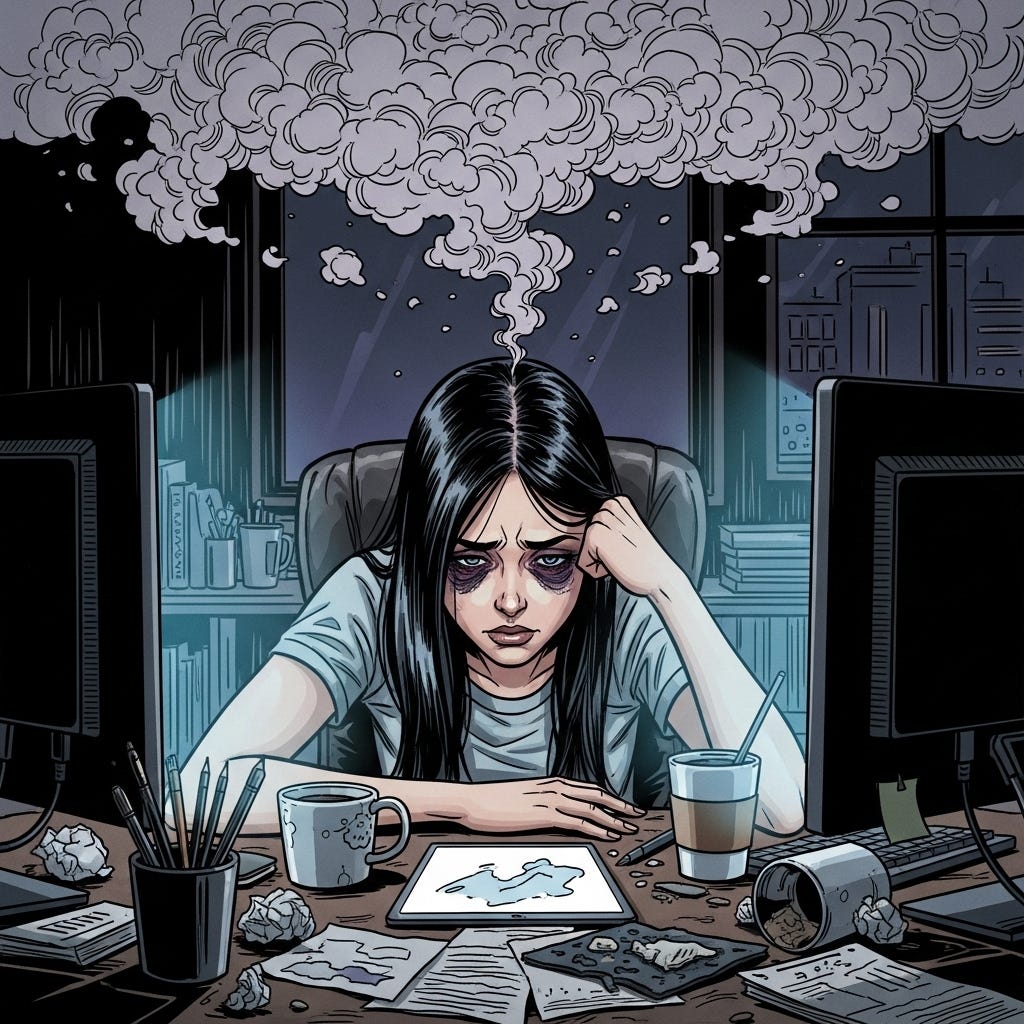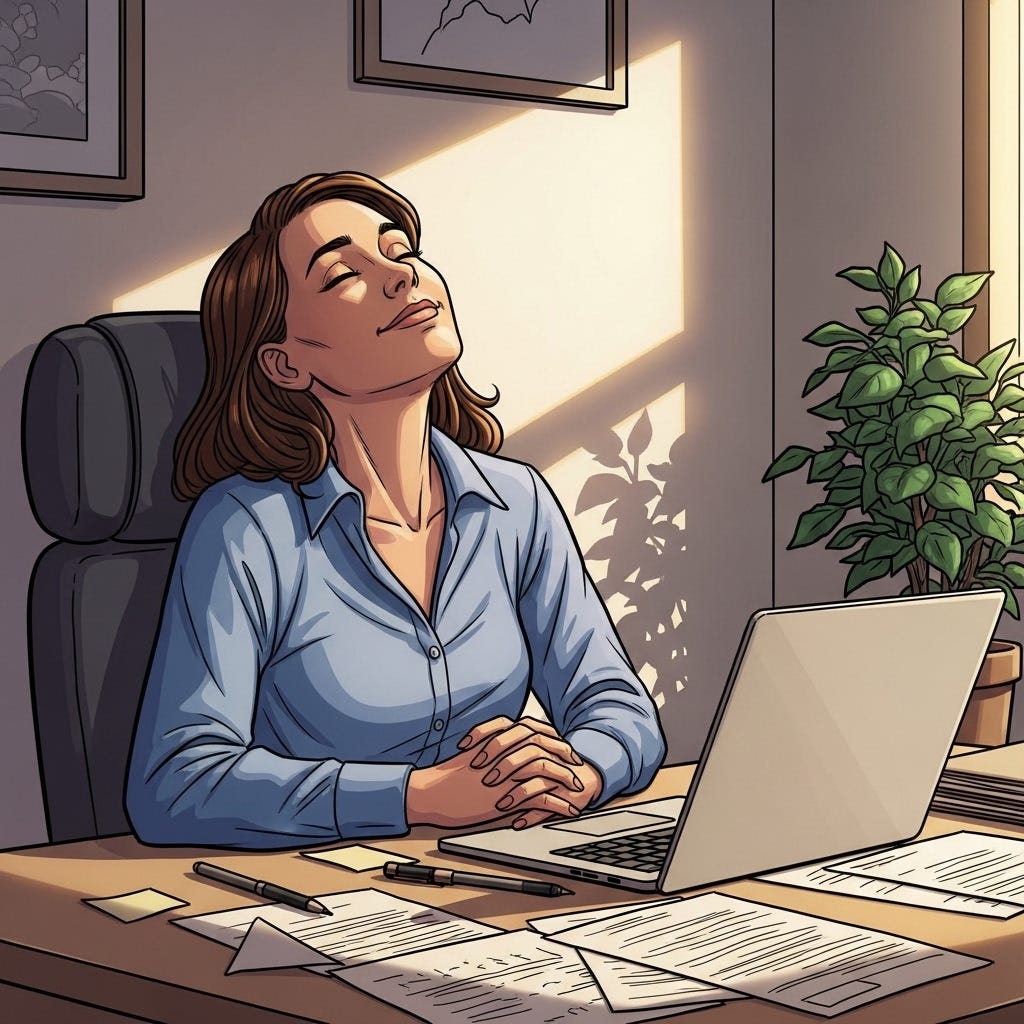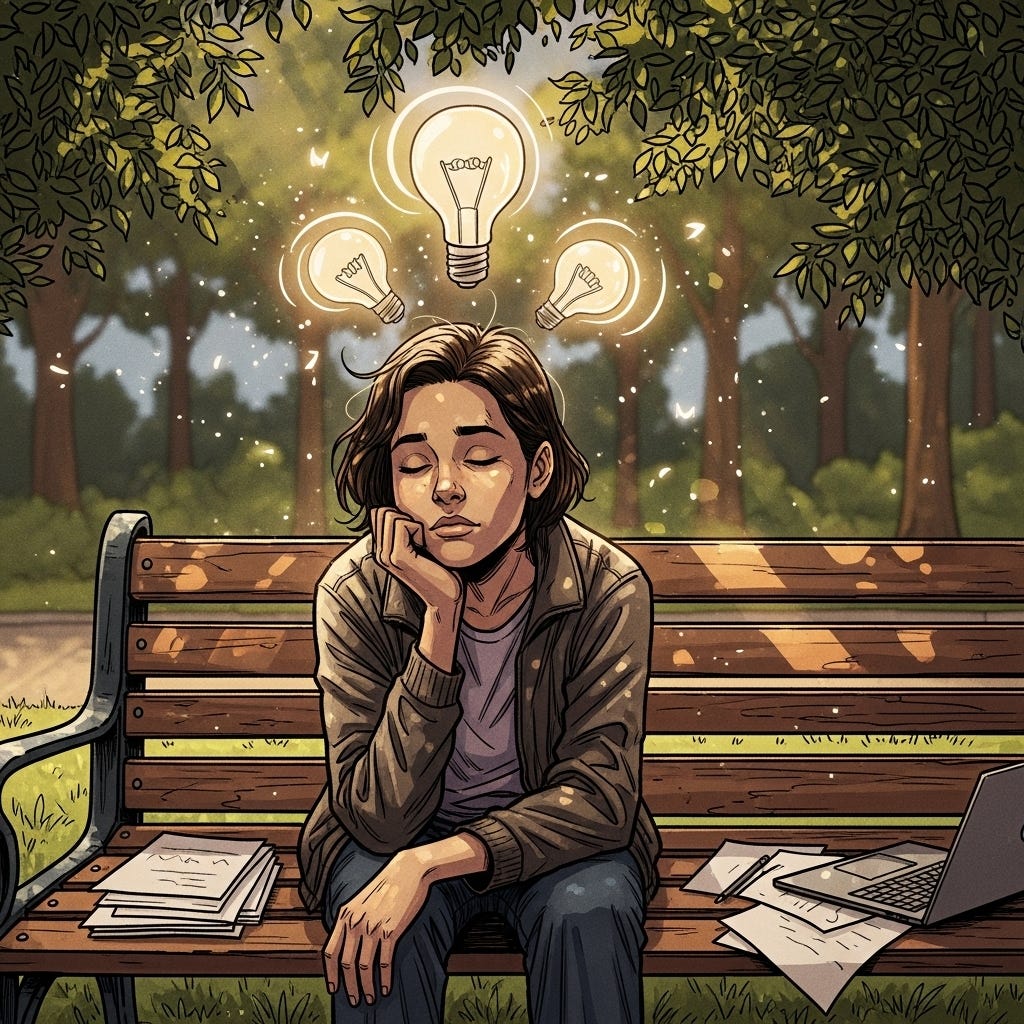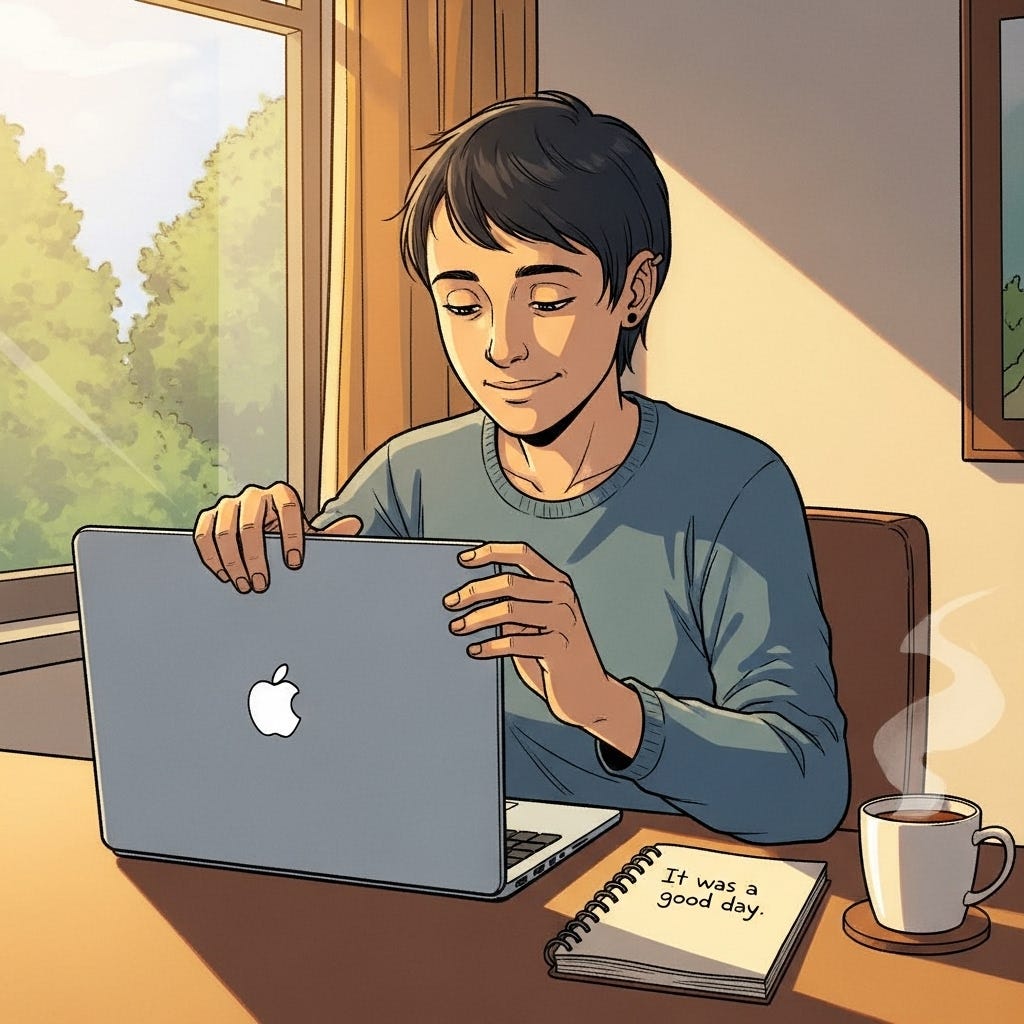The Most Productive Thing I Did Last Quarter? Nothing.
Why Your Best Ideas Come After You Stop Working
Last quarter, I tracked something weird. Every time I had a breakthrough like a pricing model that made sense, a content angle that landed, a client problem I actually solved - it happened when I wasn’t working. ✨
In the shower. On a walk. Lying in bed at 11pm thinking about something completely unrelated.
Never at my desk.
I started collecting these moments. The email I wrote at 2am that brought in three clients. The business model I sketched on a napkin during a family dinner. The framework my brain handed me while I was washing dishes (of all places).
So I did what any data-obsessed founder does: I started measuring the gap between “working hard on the problem” and “having the solution appear when I stopped.”
The pattern was consistent: 2-3 days.
I’d wrestle with something, feel stuck, stop working on it, and 2-3 days later—boom. The answer would just be there. Ready. Clear. Sometimes laughably obvious in retrospect.
That’s when I realized: I’d been measuring productivity all wrong.
The Hidden Cost of Constant Work
Here’s what nobody tells you about ADHD brains (or creative brains, or any brain, really): We need to go offline to process. 🧠
Neuroscience calls it the Default Mode Network - essentially your brain’s background processor. When you step away from a problem, your nervous system keeps working on it. It’s sorting, connecting, filtering patterns you didn’t consciously notice. Your brain doesn’t stop just because you did.
But here’s the thing: if you never give it space to do that work, you’re just spinning.
You’re at your desk for 8 hours. Nothing lands. You force it harder. Still nothing. You add another cup of coffee. Your nervous system gets more activated, not more creative. You’re stuck in fight-or-flight, which is literally the opposite of the brain state where genius happens.
The best ideas don’t come from hustle. They come from integration time.
When I stopped fighting this, it was when I actually scheduled my rest like it was a client meeting - everything changed.
What Actually Happened
I permitted myself to work differently. Not “work less and feel guilty about it.” Actually different.
Here’s my Q3 rhythm (the one that felt weird but worked):
Deep work block: 90 minutes of uninterrupted focus on revenue-generating tasks.
Integration break: 30 minutes where I left my desk. Walked. Watered plants. Unloaded the dishwasher. Let my nervous system catch its breath.
Problem-soaking: I’d spend 15 minutes naming a challenge (not solving it, just naming it). Then I’d step away. Fully away. For hours, sometimes.
The breakthrough window: 2-3 days later, the answer would show up. Not because I was pushing. Because I’d created space for my brain to actually work.
It sounds like nothing. It sounds like doing less.
Here’s what it actually changed:
Client quality: Better fit because I was solving actual problems, not rushing to solutions
My nervous system: Regulated, not fried
Decision-making speed: Faster (counterintuitive, right?)
Ideas per month: More, and they were better
How I felt about my work: Sustainable instead of soul-crushing
The irony? I was working fewer hours and getting results that mattered.
The Neuroscience Everyone Should Know
Your brain has two networks:
Task-positive network: This is your “doing” brain. Focus, execution, grinding. It’s great for implementing, but it’s not creative. (This is what you use at your desk.)
Default mode network: This is your “being” brain. Daydreaming, wandering, connecting dots. This is where insight lives.
They can’t run at the same time.
When you’re in task-positive mode (the hustle), your default mode network literally shuts down. You’re optimized for execution, not invention.
But here’s what happens when you rest: Your default mode wakes up. Your brain starts connecting threads you didn’t even know were there. It finds patterns. It solves problems you stopped consciously working on.
This is literally how breakthrough thinking works. It’s not motivation. It’s neuroscience.
And if you have ADHD? Your brain is probably already struggling to toggle between these states. Forcing it to stay in task-positive mode for 8 hours straight isn’t productivity. It’s torture.
Rest isn’t the opposite of productivity. Rest is where productivity comes from. 💡
The Bloom Method™: Rest as Strategy
This is what changed everything for me (and why I built it into my business :) 🌱
1. Work with your energy, not against it.
The day I stop trying to be “productive on demand” is the day I become actually productive. I check my nervous system first. High energy? Revenue tasks. Medium? Delivery work. Low? Delegation or easy wins.
Energy-based scheduling is not lazy. It’s strategic.
2. Build in non-negotiable rest blocks.
Not someday. Not “when things slow down.” This week. These are as important as client meetings. You don’t cancel them. You protect them.
For me: Monday and Friday afternoons. That’s when I walk, think, disappear. It’s non-negotiable.
3. Name the problem, then stop working.
This is the game-changer. Spend 15 minutes getting really clear about what you’re actually stuck on. Write it down. Then step away completely.
Don’t think about it. Let your brain work.
4. Give it 2-3 days.
This is the timeline I’ve seen over and over. Not overnight (that’s just anxiety spiraling). Not in an hour (that’s just a distraction). Usually 2-3 days, and the answer shows up.
5. Write down every breakthrough.
This proves to your brain that rest works. That stopping produces. That you don’t have to earn your ideas through suffering.
When your nervous system sees evidence that ease = results, everything changes.
What This Looks Like in Real Life
Monday morning: I’m stuck on a client pricing problem. It’s complex. I worked on it for 90 minutes. Nothing lands.
I name it: “How do we create pricing that feels fair but sustainable?”
Then I stop. Completely.
Wednesday: I’m in the shower. My brain just... hands me the answer. A three-tier model that actually works. Better, one of my clients later tells me it’s exactly what they wanted.
Did I solve it through effort? No. I solved it by creating the conditions for my brain to work.
That’s it. That’s the whole strategy.
The Question Nobody’s Asking
Here’s what I want you to sit with:
What are you not discovering because you never stop working?
What client problems aren’t you solving? What revenue model isn’t emerging? What creative direction aren’t you finding?
Not because you’re not smart enough. Because you haven’t given your brain the space to work.
The most productive quarter I’ve had wasn’t the one where I hustled hardest. It was the one where I took more naps, more walks, more “unproductive” time.
And I know this works because I see it in my results.
This week, try this:
Pick one problem you’re stuck on. Get really clear about it. Please write it down. Then don’t work on it for 48 hours.
I mean it. Don’t think about it. Don’t research it. Don’t brainstorm about it.
Just... stop.
See what your brain delivers when you get out of the way.
I’m betting it’s better than what you’d force through grinding.
The most productive thing you can do today might be to close your laptop.
Try it.
Try sitting with this:
What problem have you been forcing that might need integration time instead?
When do your best ideas actually come? Can you protect that time?
What would change if you scheduled rest like you schedule client meetings?
Thanks for reading. If this landed, the best way to support is by sharing it with someone who needs permission to stop working.
P.S. If you want to see where your nervous system is right now, take the Business Health Reset Quiz - it’s about 10 minutes long and shows you exactly how much you’re pushing. For the framework tool I use to structure my week around my energy (not my guilt), grab the Weekly Visual Roadmap template. Both are free.
From Maxed Out To Mapped Out. ✨ Kate








